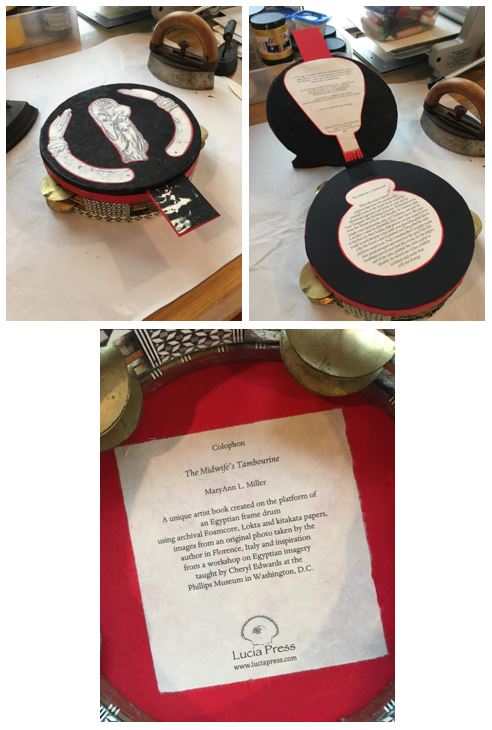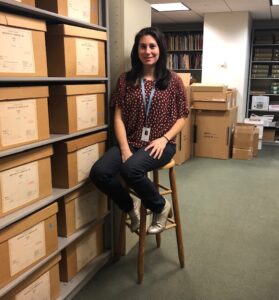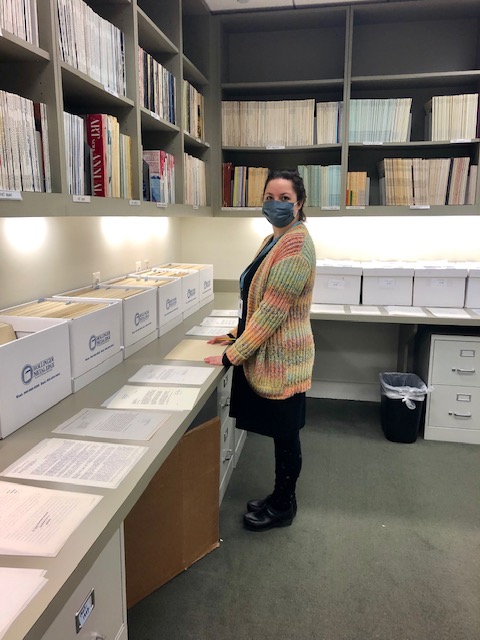Artist Beth Curren of the Otis Street Arts Project reflects on the hands-on workshop she led: The Artist’s Book as a Time Capsule.
As an artist, I believe everyone has a creative streak―it just has to be discovered. As we all gradually came to terms with the limits and extremes of life during a pandemic and political strife, it became even more important to consider ways for artists to give back to the community. Artists and arts organizations offered many ideas: print exchanges for fundraisers, online presentations and tutorials in every genre imaginable, virtual exhibits and gallery tours. On a smaller scale, I created packets for the 22 houses on our small cul-de-sac and most every home participated in the Middleton Lane Prayer Flag Project.
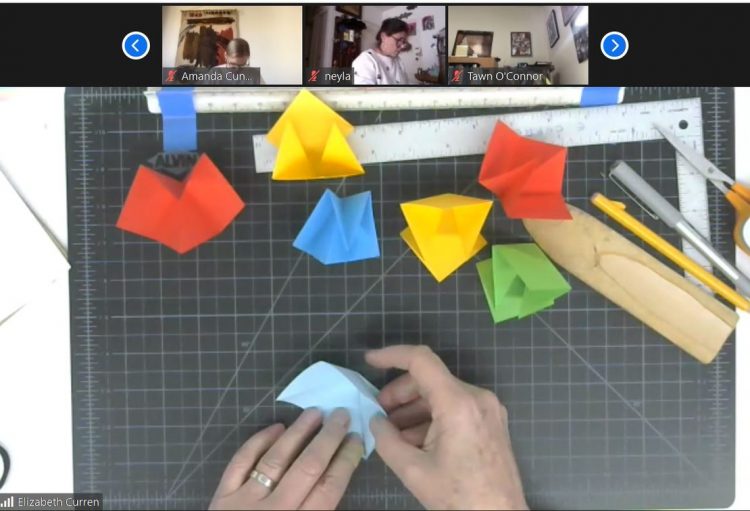
Making artist’s books during the online workshop
When David Mordini, our director at Otis Street Art Project, outlined The Phillips Collection’s Saturday afternoon online workshops, we realized it was possible to reach an even wider community. These sessions were an opportunity to engage people in something new, something that they had never tried before. I chose artists’ books since it is a favorite genre, combining hand skills, art skills, and writing skills. It made sense to design a workshop that called for materials that nearly everyone already had at home: pencil, ruler, 8.5 x 11 in. paper, scissors, glue, and a popsicle stick/round bladed knife for creasing the paper. With these tools, we made three structures: a Book-in-a-Page, a Petal Fold, and a Flag Book. For content, participants could use photos, stickers, crayons, magic markers, images, and text cut from magazines. I always encourage students to make two to three identical models―repetition fosters muscle memory and the mission is for the students to be able to re-create the structures on their own.
After much discussion with David, I chose the theme of a Time Capsule. The three structures would incorporate images and text; when finished, they would be put in an envelope, dated, and put aside to be reopened sometime in the future. Suggested prompts included: “How has this pandemic affected your sense of yourself? What do you hope for in the future? What do you want to remember or to remind yourself that makes this year different from all others?”
As always, there was a lot of prep for the workshop: a PowerPoint presentation; hand-outs and notes; pre-cut paper so that I could repeat the same steps over and over until the participants felt confident that they had mastered each structure. David had set up a little studio at OSAP and we had a short dress rehearsal with Emma Dreyfuss and Miguel Perez from the Phillips and that was very helpful. Over fifty people signed up for the class; that was both gratifying and a bit intimidating for my first Zoom workshop but the enthusiasm and excitement from the participants was very encouraging. There was a wide range of ages and skill levels but these basic book structures are very flexible and allow for endless variations of text and imagery.
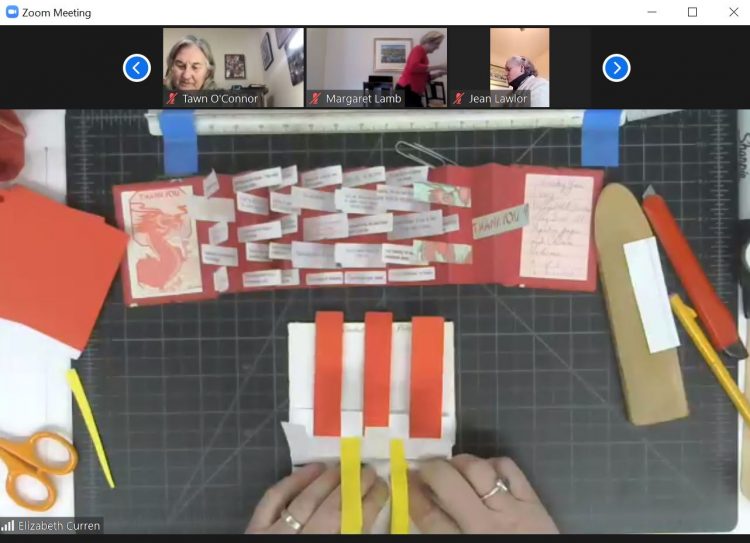
Making artist’s books during the online workshop
The best part was when we did a show-and-tell at the end. People are full of surprises and ingenuity. The variety and ingenuity of their pieces reflected, I think, their response to making art during a crisis. Many of the children were all ready to put their masterpieces in boxes and bury them in the back yard for their future selves to find.
As for me, I was both overstimulated and exhausted: trying to connect and engage with that many people in their little boxes on the computer screen was a real challenge. But it was so, so worth it. And I think I learned a lot, too―there are steps I would modify if I taught this online again: I’d teach two structures instead of three; I’d leave more time for individual work; I might schedule in a few breaks. But those are small quibbles. It was a fabulous experience and one I hope to have the opportunity to repeat.
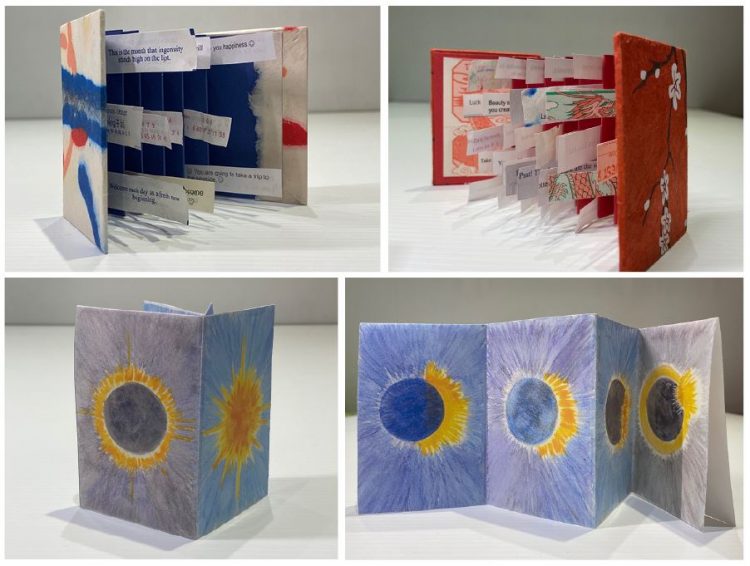
Artist’s books by Beth Curren: (top) My Fortunes (flag book structure); (bottom) Solar Eclipse (book-in-a-page structure)


